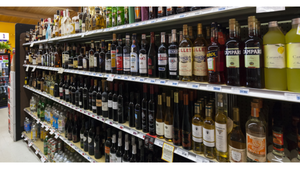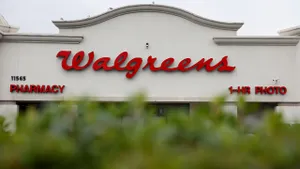Seal of approval
Commodity boards have insight and experience within their categories. Retailers can flourish with a little help from these friends.
January 1, 2018
Commodity boards have insight and experience within their categories. Retailers can flourish with a little help from these friends.
Seeing a brand on a product often gives consumers peace of mind. This even holds true in the produce department as consumers become increasingly concerned with the “who” and the “where” behind the food they consume. Sometimes simple signage or a PLU sticker with a piece of fruit’s origin may sway consumers toward an otherwise lost purchase.
Enter commodity boards.
Most fruits and vegetables are still sold from bins in bulk; thus having the branding, marketing and promotional support of a commodity board can help retailers promote otherwise uneventful produce categories—and without much financial investment for the retailer.
Such organizations are also an avenue of knowledge. Since their purpose is to understand and improve the category they support, commodity boards conduct a significant amount of research into the health and nutritional value of their respective fruit and vegetable categories for usage in retail promotions.
The Chilean Fresh Fruit Association (CFFA), for example, engages retailers by pulling together the key people in an organization that impact the sales and marketing of the fruit. “Beyond meeting with the buyer, we pull in merchandisers, marketing and social staff and retail dieticians to develop integrated programs that are specific to those stores,” says Karen Brux, North America managing director for the San Carlos, Calif.-based organization.
The result could include a blueberry ad in the circular, usage ideas shared on social media and blog posts by the supermarket RD, in addition to point-of-sale material and some in-store demos. “All the separate components come together to create a really strong two-week push for Chilean blueberries,” says Brux, adding that the CFFA does this year-round for multiple commodities in chains with 10 to 2,000 stores.
With consumers more alert than ever and competition at its peak, these marketing boards are pulling out all the stops for engagement. Grocery Headquarters spoke to the key officials at a number of commodity boards across a variety of produce categories to find out what is in the works and how retailers can best partner up.
Talk about some of the research your organization has conducted recently.
Seth Pemsler: The IPC recently completed a project designed to address the image of Idaho potatoes for retailers. In summary, the key findings highlighted that consumers associated Idaho with potatoes, and use the words “quality,” “taste” and “premium” to describe Idaho potatoes. The results are typical and consumers around the world know the association.
Other IPC research had similar results, showing that 60% of consumers would pay 50-cents or more for Idaho potatoes, and the average Idaho potato consumer spends more on produce during each shopping trip.
Ted Kreis: Most of the NPPGA’s research dollars go into agronomy and variety development, some of which are fresh market varieties. Two of the nation’s most dominant varieties were developed at North Dakota State University: the Russet Norkotah and the Red Norland. Be assured we have more varieties in the pipeline.
Mark Villata: The USHBC invests in scientific research that explores the potential health benefits of blueberries. As the positive results of these studies are published, the council shares the news with media, consumers and retailers. In addition to health research, the USHBC commissions periodic consumer usage and attitude studies, which yield insights into consumer purchase patterns and motivations related to blueberries.
John Toaspern: Recently, the industry came together and formed the Alliance for Potato Research and Education that a number of parties fund to conduct research. Then, the USPB has a consumer messaging campaign around nutrition that it uses to convey the resulting messages about nutrition. One recent study supported the idea that potatoes can be part of a healthy weight management program.
How does your organization promote nutritional information about the category?
Karen Brux: The CFFA merchandising team has strong relationships with supermarket dietitians and retail marketing staff, so we share nutrition information that they can utilize on their marketing platforms—social media, in-store newsletters, merchandising materials or ads.
Our point-of-sale material also has health messages. For example, one of our blueberry POS cards says “Enjoy them to your heart’s content” and then in smaller print “A handful of blueberries helps satisfy the recommended daily fiber intake, which keeps the heart healthy and cholesterol in check.”
Juliemar Rosado: Last year there was a focus on hydration at the NWPB. The board commissioned an online poll in May 2014 that surveyed 2,050 adults in the U.S., and the results showed that nearly nine out of 10 believe that they have to drink something in order to stay hydrated. Furthermore, according to the CDC, 44% of adults drink less than four cups of water per day.
That is where watermelon comes in; you cannot spell watermelon without the word “water” after all. It is 92% water and an excellent source of vitamin A, C and potassium, among others. Combine that with the continued research into the Citrulline in watermelon, which is shown to reduce blood pressure, and why would retailers not want their consumers to eat more watermelon?
What promotional elements does your organization provide retailers?
Sherise Jones: New this year, USA Onions offers a bi-monthly newsletter to update retailers with key information about harvest and availability. As always, we offer retailers a variety of POS materials and ideas to assist in growing onion sales. One idea is to offer quick-idea recipes near the onion section to encourage impulse purchases. We work with recipe development professionals to create recipes that retailers can share with their customers in this way; the recipes are designed to spark consumer interest in buying USA Onions with the latest and hottest in onion trends.
Kreis: The NPPGA works heavily with the USPB for promotional work, which includes category management for retailers and funding of consumer research. Red and yellow potatoes have benefited from these programs; more than 90% of the potatoes grown in the Red River Valley for fresh market are reds, and the remainder are yellows.
We also promote through our website and the Red River Valley Potatoes Facebook page.
Share some examples of partnerships your organization has created with retailers to boost the category.
Jim Allen: The NYAA utilizes a number of digital programs in partnership with retailers. We have a system that identifies an apple buyer when they scan their loyalty card at a freestanding kiosk, which then prints an instant rebate coupon for our apples. There are also click-through programs, where the consumer subscribes to a retailer’s program on the website and we link a coupon to the consumer’s loyalty card that is automatically deducted at checkout. Such programs are becoming popular; retailers are doing more and more online.
In-store demos are also strong; we did more than 3,500 in-store demos this year with major grocery chains.
Toaspern: The USPB partners with shippers and retailers to conduct, what we call “test and learns,” which are small joint promotions or other in-store activities that we believe will drive sales. We test the concept, and if proven successful, we promote it to the industry. One that we found successful last year was the increase in sales of potatoes when retailers used images of prepared potato dishes in circulars, versus images of raw potatoes.
In what ways does your organization reach consumers directly?
Jones: USA Onions has a strong presence on social media. Reaching out directly to consumers with social media is an important part of staying connected with customers, especially during the off-season.
Rosado: Our participation with the Marine Corp Marathon is a really good way of connecting with individuals, especially athletes. It provides great exposure and gets watermelon into people’s hands. We will be returning for our third year.
Allen: We do a number of cause-marketing campaigns. We support pediatric cancer research by partnering with retailers and donating the promotional dollars to research on the retailer’s behalf. The program will say something along the lines of, “Buy New York apples and help beat cancer. New York apple growers and this store are donating $25,000 to support cancer research.” We have usually about 25-30 retailers participate.
Kathy L Fry-Trommald: This year we are sponsoring the 4th annual Sweet Onion Restaurant Week. It has been a very successful promotion and brings a lot of awareness and business to our industry, as well as the participating restaurants.
Also, the Walla Walla Sweet Onion Festival will hold its 31st annual event this year. We have food demos and competitions; a Kids Zone with loads of activities; food, commercial and crafts vendors; and a stage with weekend-long entertainment. New this year, the Pacific Northwest Barbecue Association will host a competition; a dozen or so competitors will prepare beef and pork items with grilled onions.
Demographic shifts, shopper habits and the use of technology are impacting the marketplace significantly. How does your organization address these changes?
Pemsler: Right now we are focused on the Hispanic consumer. From our research into the demographic, we identified a number of elements that Hispanics specifically are looking for when shopping, and we are taking that to Hispanic-oriented and traditional national retailers. So far, there have been some very favorable results.
Villata: One way the USHBC reaches a broader audience is by way of schools and chain restaurants. Over the past decade, it has influenced thousands of elementary schools and chain restaurants across the country to serve more blueberries on their menus. In 2014, blueberry mentions on top chain restaurant menus had doubled since 2007, and more than two-thirds of schools the USHBC surveyed reported serving blueberries.
The Panel
Karen Brux: North America managing director, Chilean Fresh Fruit Association (CFFA), San Carlos, Calif.
Represents: Chile’s fresh fruit growers and exporters, who ship more than 800,000 tons of fresh fruit to North America each year.
Mission: Work with importers, wholesalers and retailers to drive sales in the U.S. and Canada, and serve as a liaison between the North American market and Chile to keep all parties updated with industry happenings.
Sherise Jones: marketing director, Idaho-Eastern Oregon Onion Committee - USA Onions (IEOOC), Parma, Idaho
Represents: More than 200 growers and 30 shippers in Southwestern Idaho and Malheur County, Ore.
Mission: Works to increase consumption of Idaho-Eastern Oregon onions through the use of promotional programs, education, advertising and communications.
Seth Pemsler: VP of retail and international, Idaho Potato Commission (IPC), Eagle, Idaho
Represents: The entire potato industry in Idaho, including more than 500 potato growers and about 25 shippers, as well as the dehydrated and frozen processors domestically and internationally.
Mission: To support the entire industry through the development and reinforcement of the Idaho brand and conduct research that helps improve the quality of the product.
Juliemar Rosado: director of retail operations and international marketing, National Watermelon Promotion Board (NWPB), Orlando
Represents: All the watermelon growers, importers and shippers in the U.S.
Mission: To make watermelon an everyday healthy choice by increasing the demand for watermelon through promotion, research and education.
Jim Allen: president, New York Apple Association (NYAA), Fishers, N.Y.
Represents: More than 600 apple growers in the state of New York.
Mission: Manage a range of programs to support the New York apple industry, such as promoting demand, representing members, coordinating and performing agricultural and market research activities.
Ted Kreis: marketing & commUNICATIONS director, Northern Plains Potato Growers Association (NPPGA), East Grand Forks, Minn.
Represents: Approximately 250 potato growers in North Dakota and Northwest Minnesota.
Mission: To fund and carry out research, marketing, education, communications and legislative advocacy.
Mark Villata: executive director, U.S. Highbush Blueberry Council (USHBC), Folsom, Calif.
Represents: Blueberry growers and packers in North and South America that market their blueberries in the U.S.
Mission: Promote the growth and well-being of the entire blueberry industry, and help consumers around the globe make little changes that add up to a healthier way of life.
John Toaspern: chief marketing officer, United States Potato Board (USPB), Denver
Represents: All potato growers in the U.S. excluding processors.
Mission: To promote the consumption of U.S. potatoes in both the domestic and international market.
Kathy L Fry-Trommald: executive director, Walla Walla Sweet Onion Marketing Committee (WWSOMC), Walla Walla, Wash.
Represents: Seventeen sweet onion growers in the Walla Walla Valley.
Mission: Promotes research in production and marketing, and the development of marketing and promotion programs, including paid advertising of Walla Walla sweet onions.
About the Author
You May Also Like




